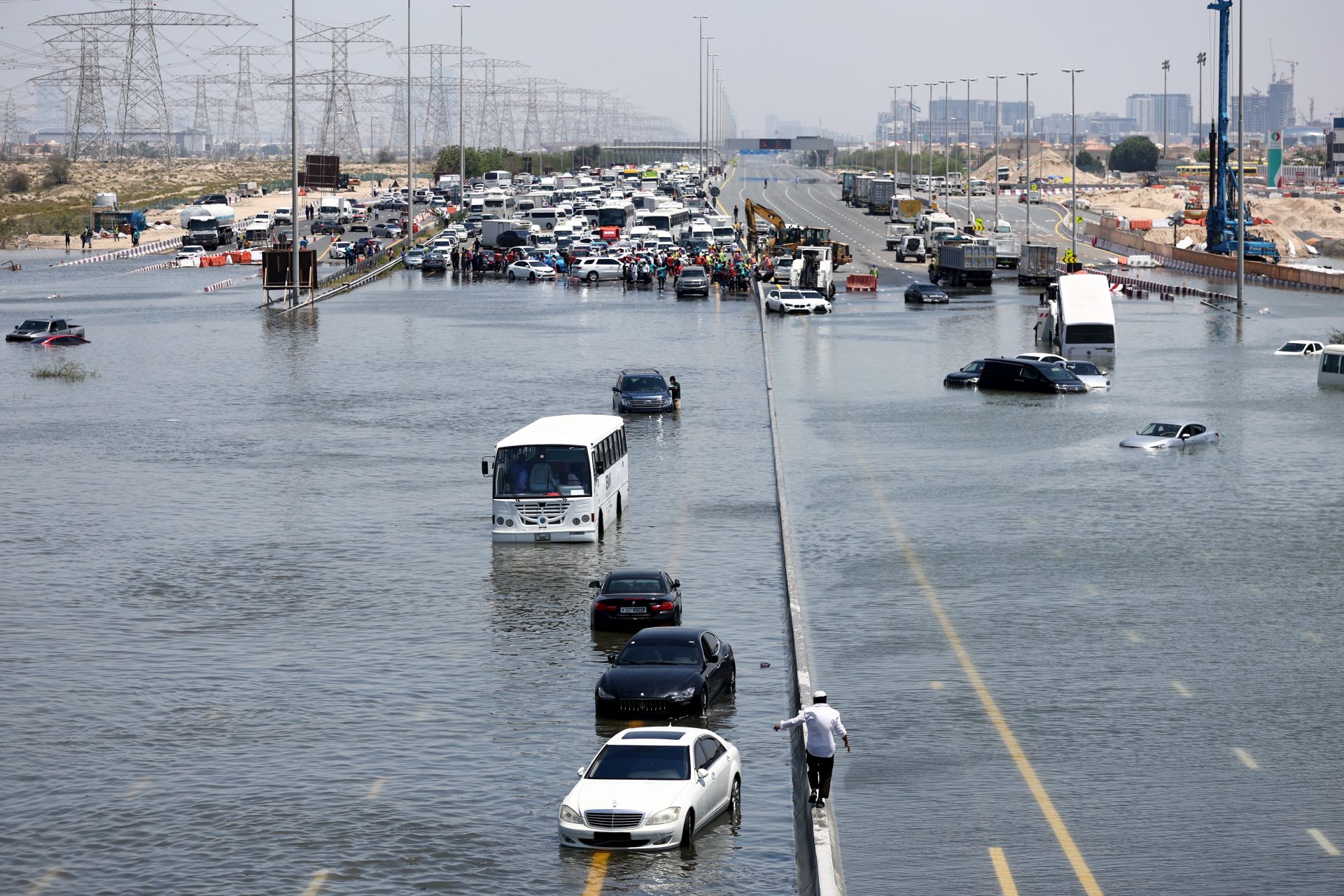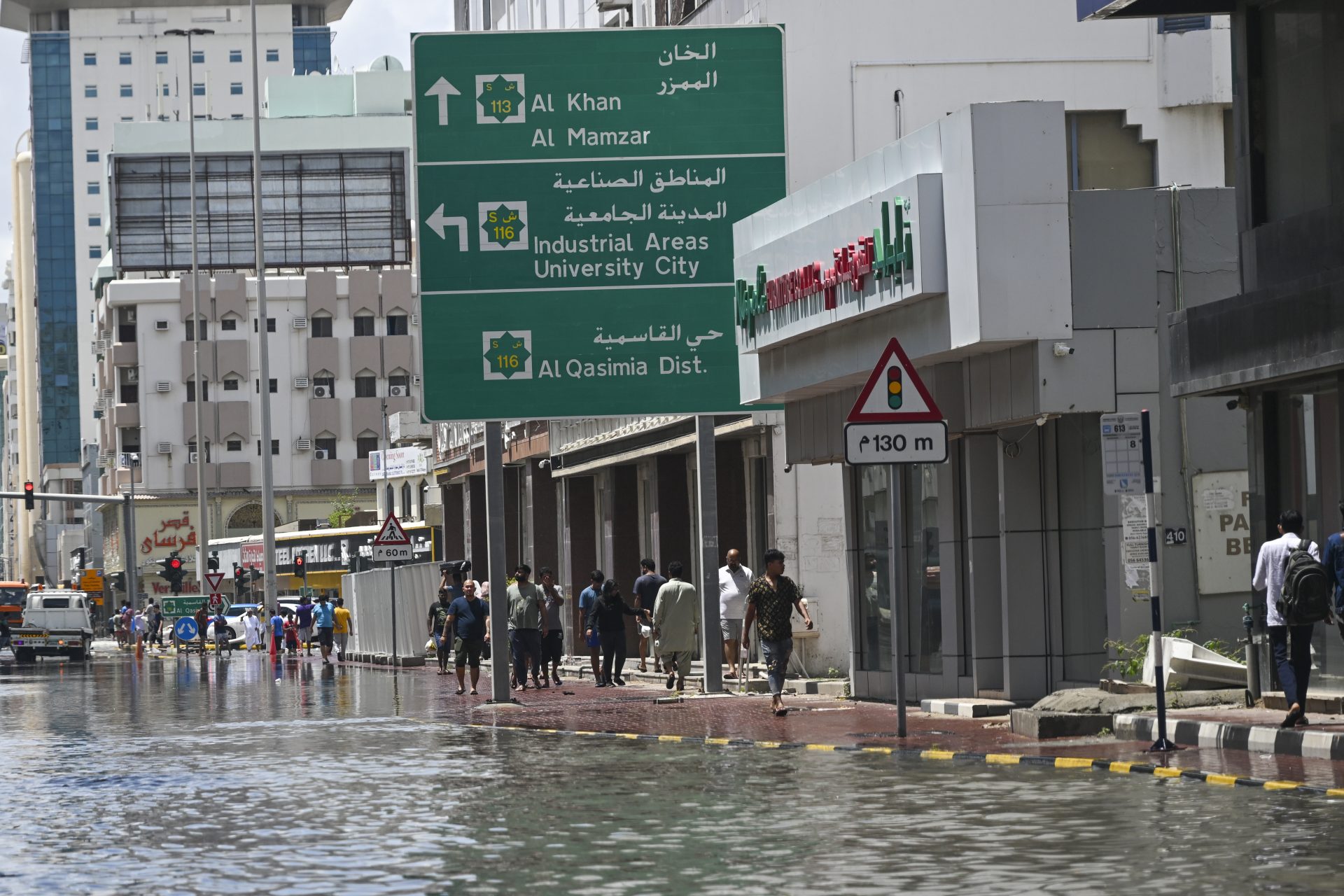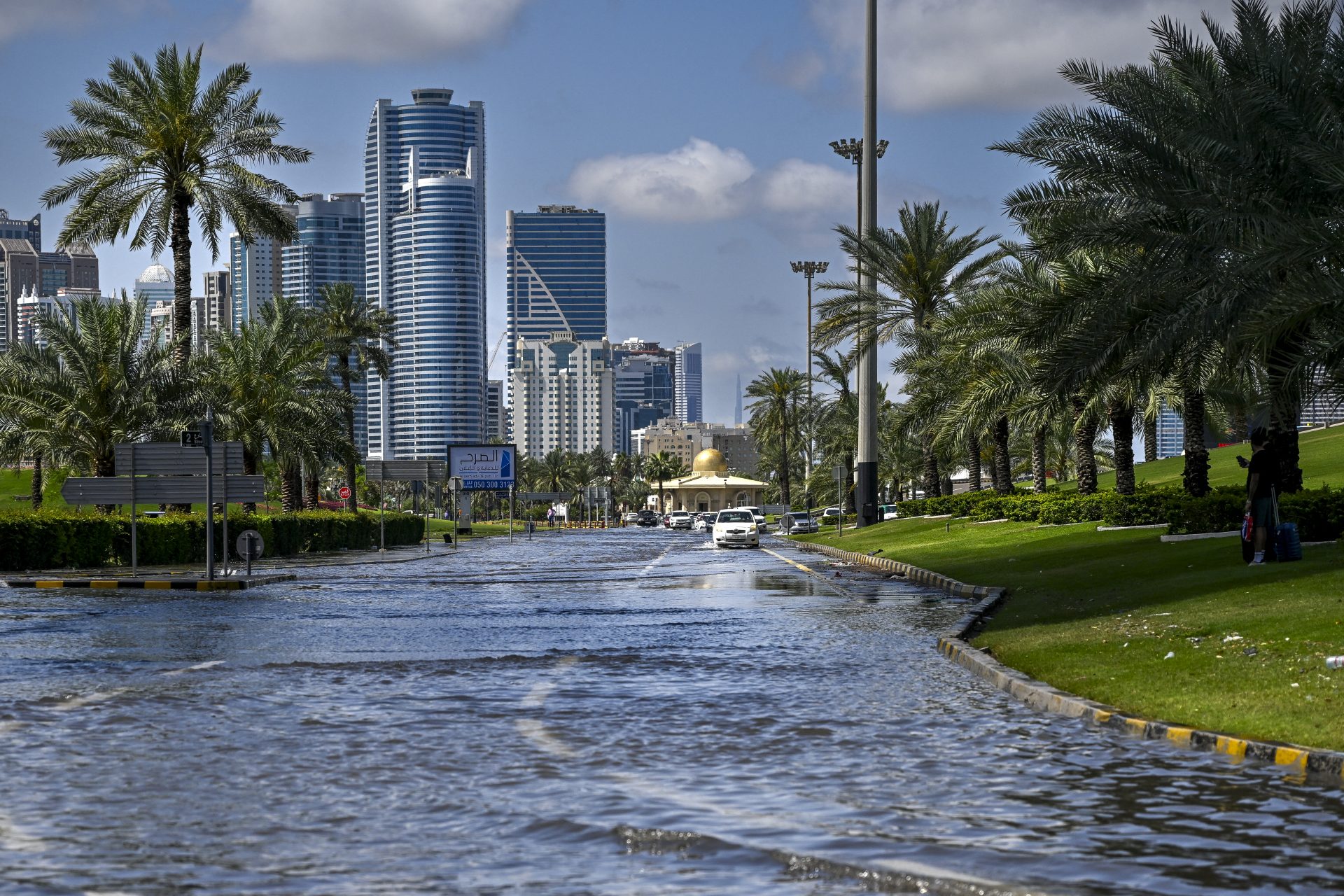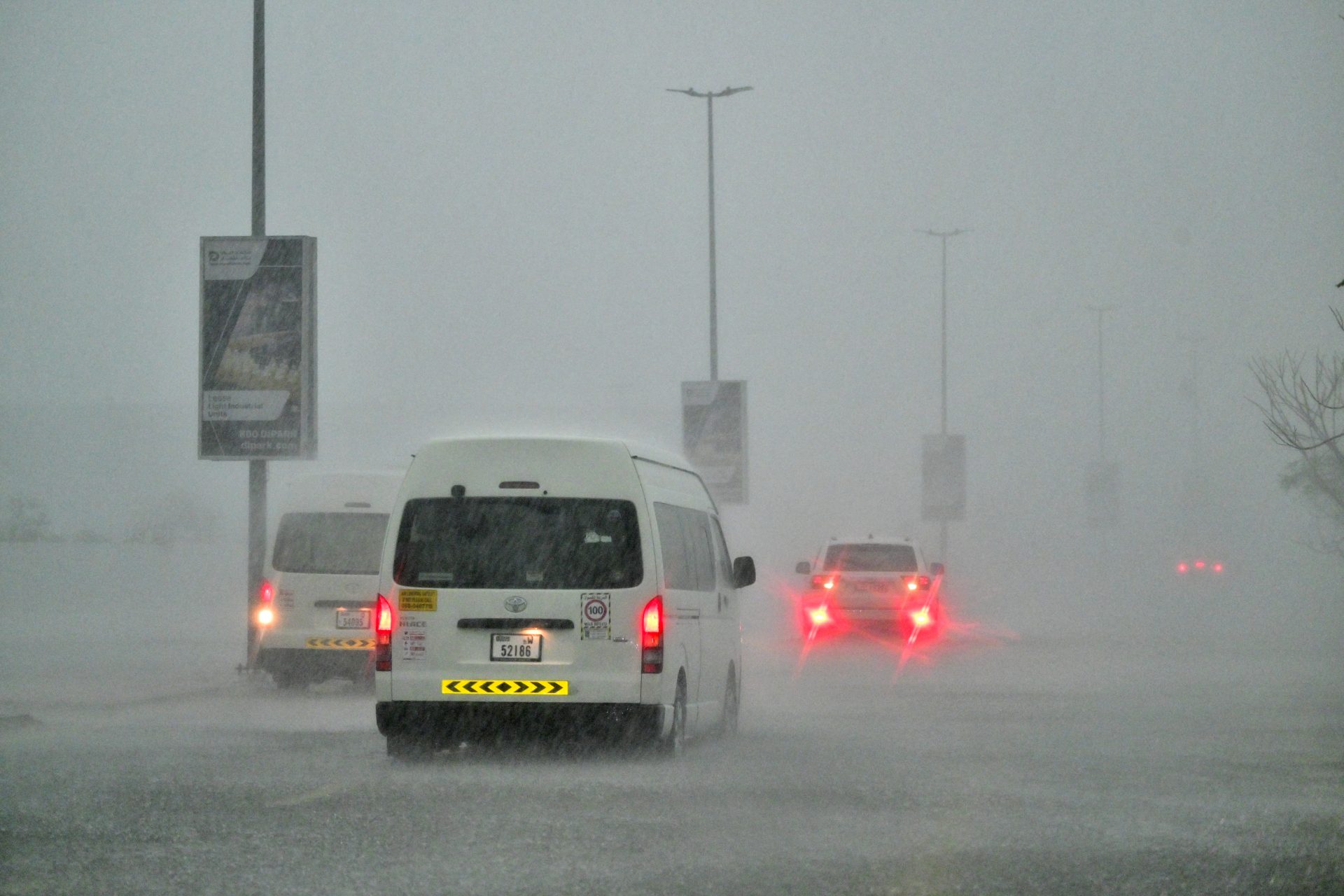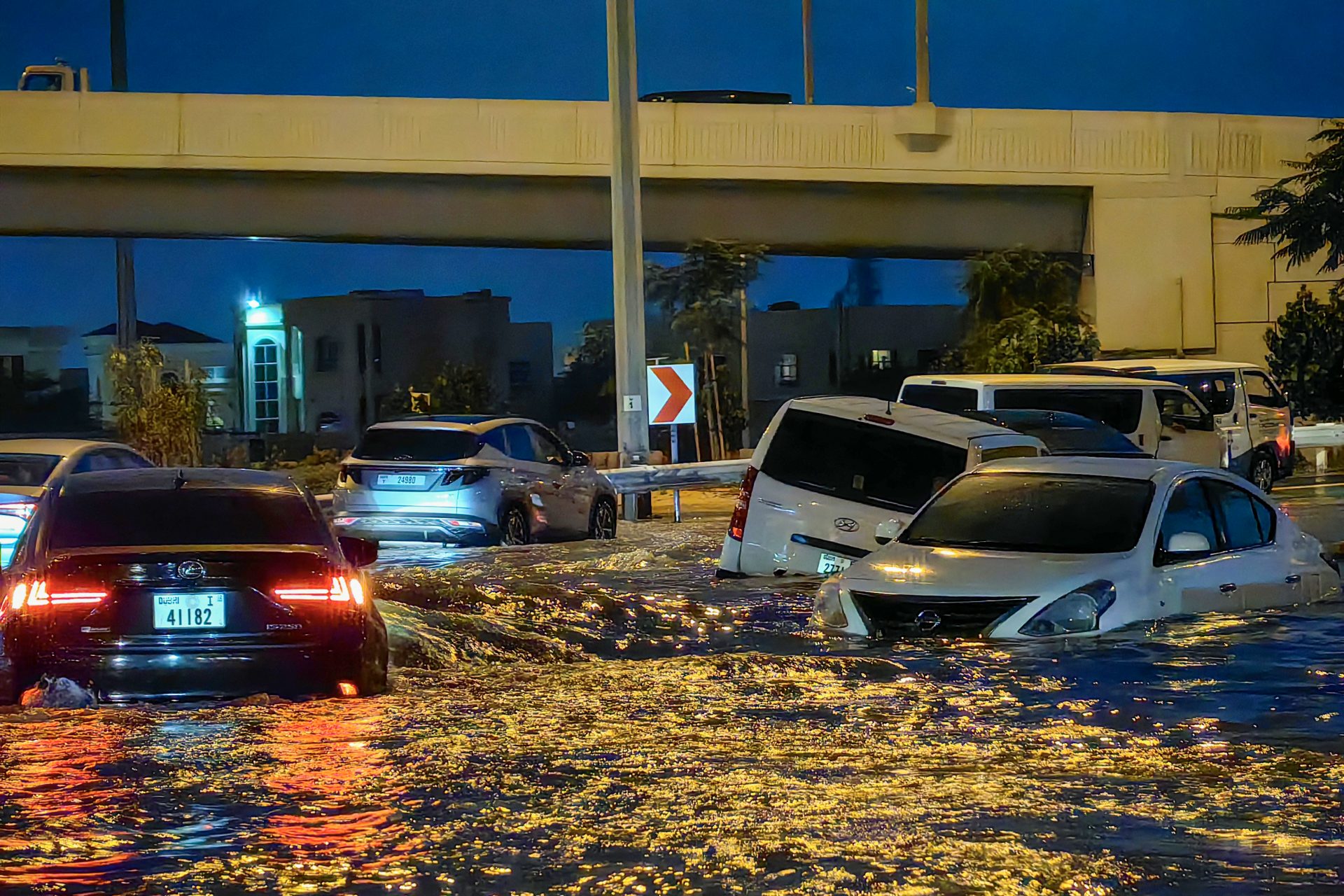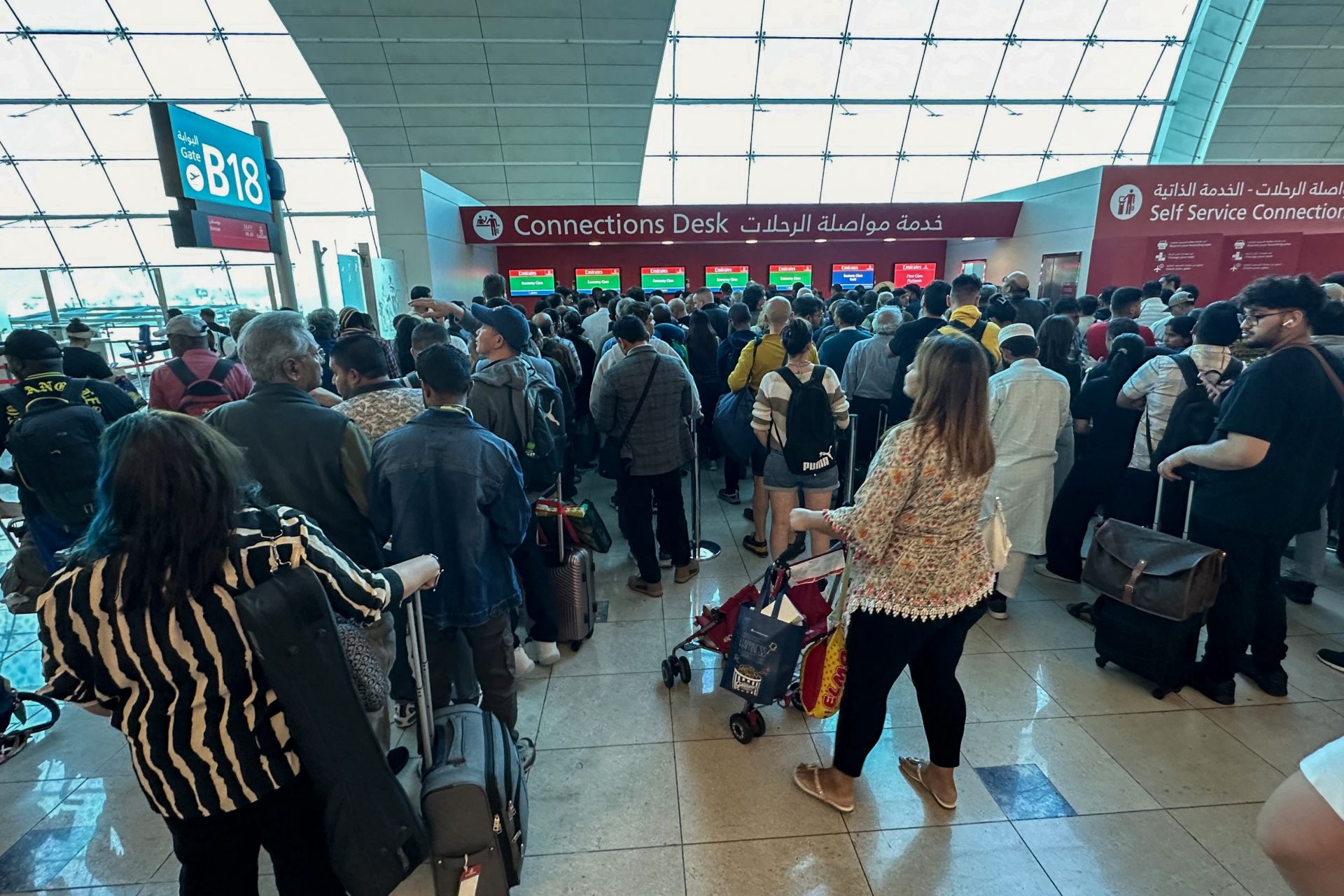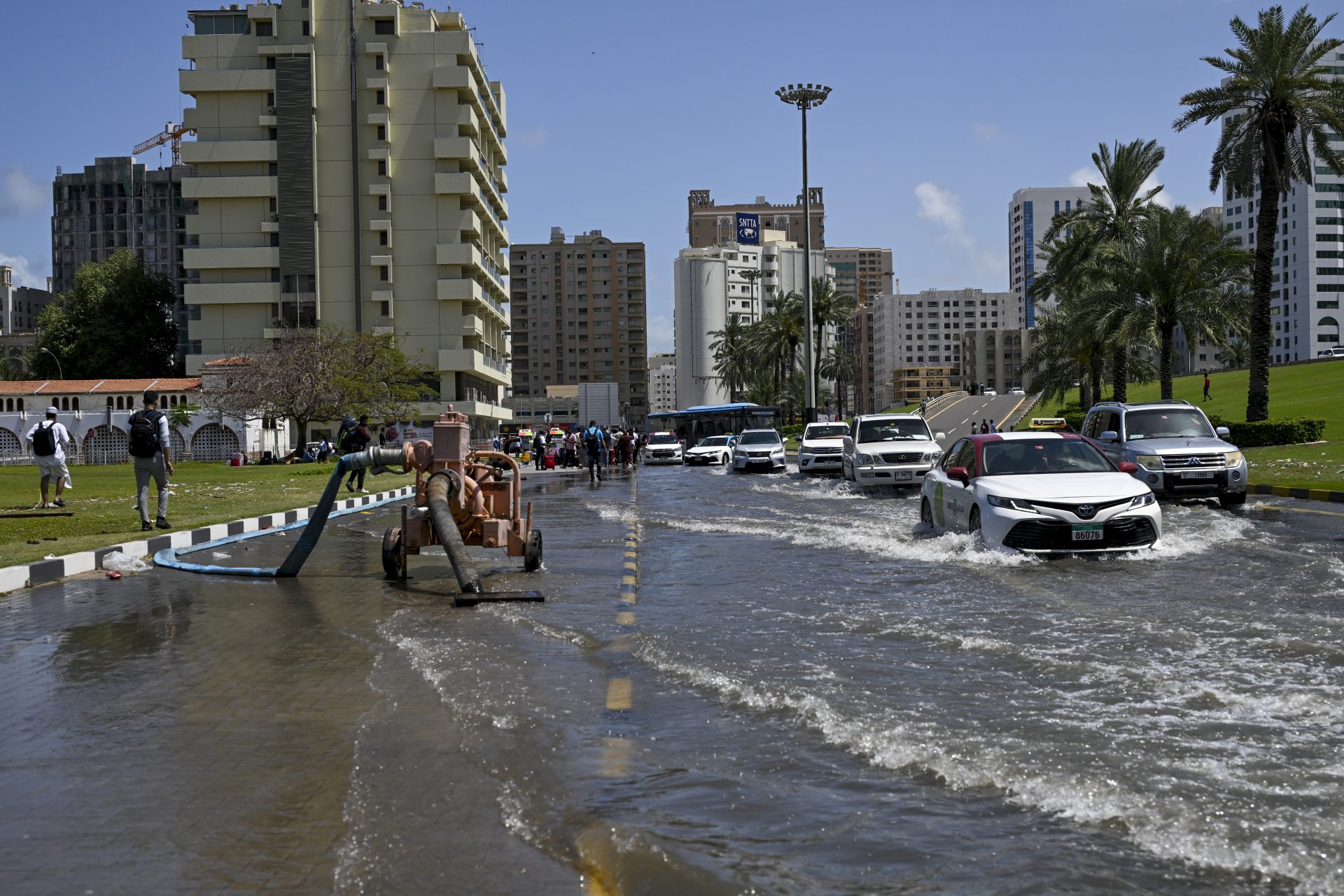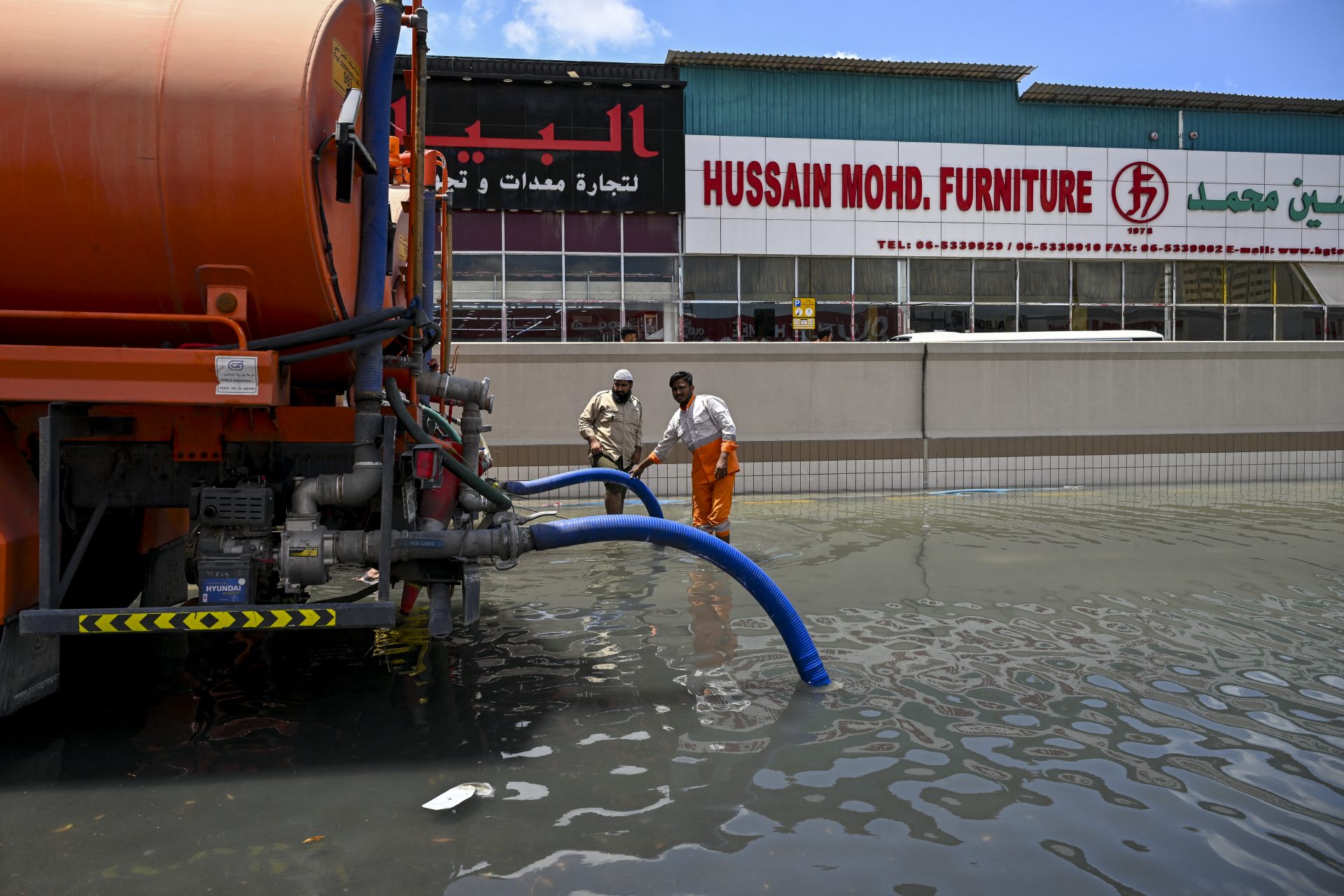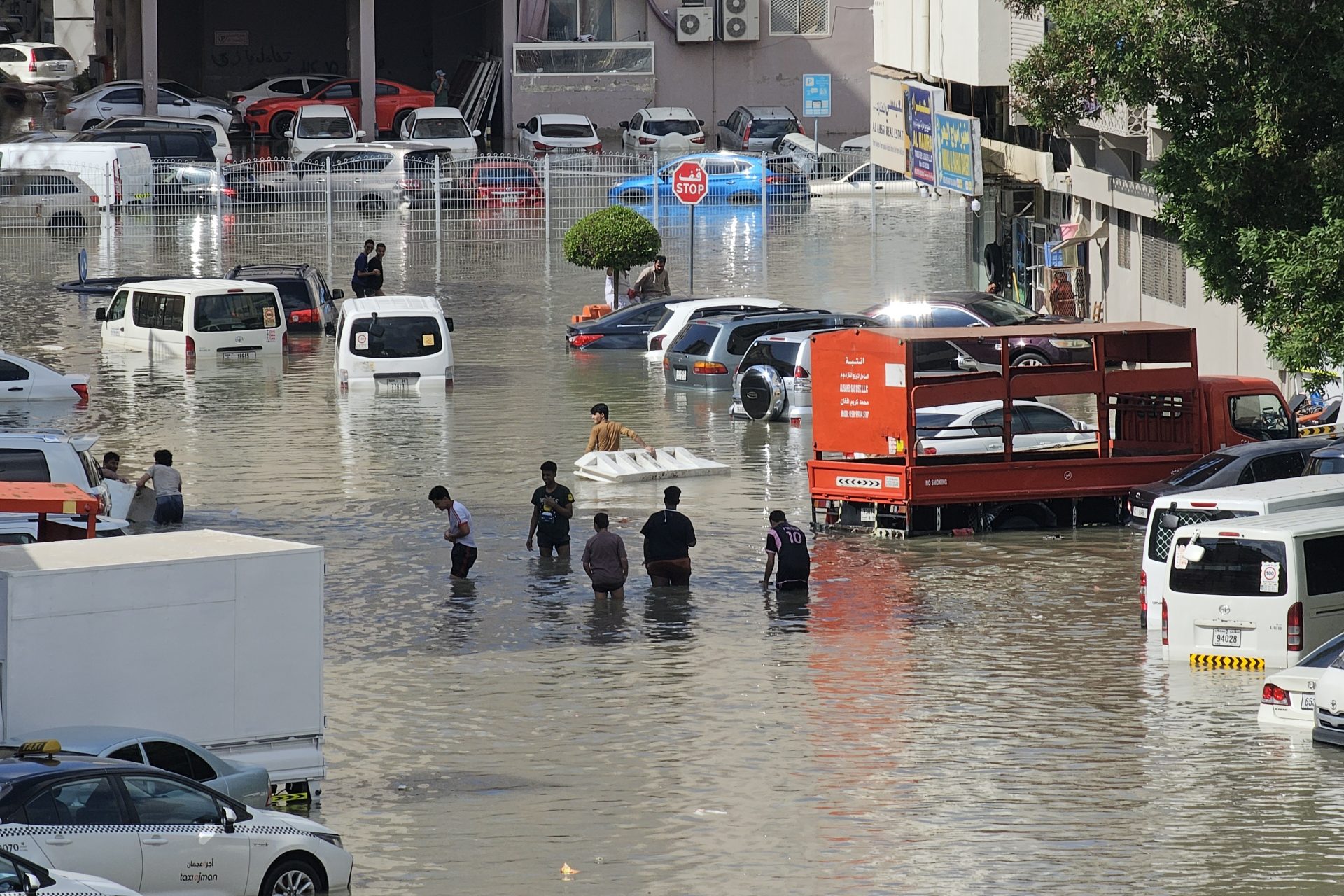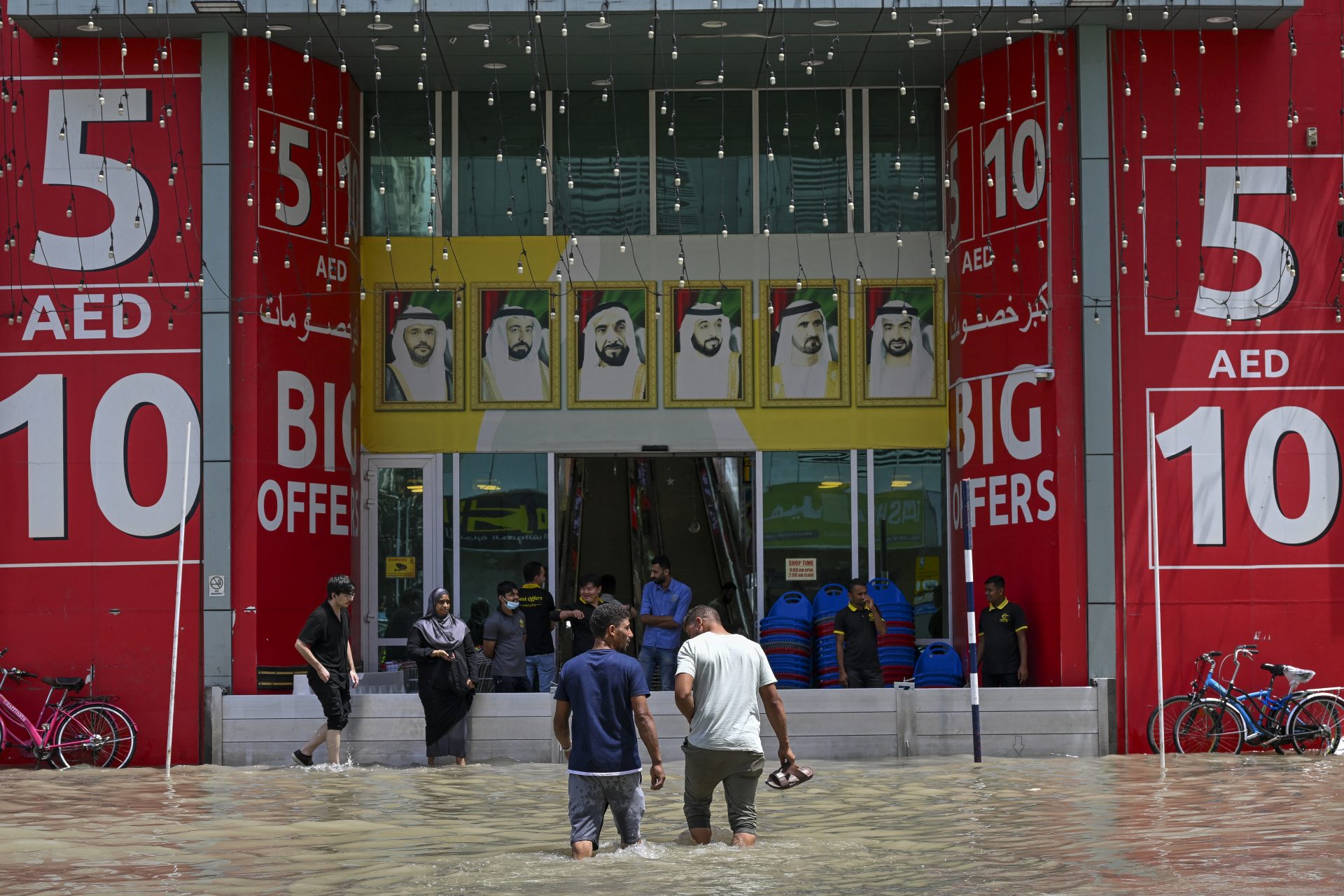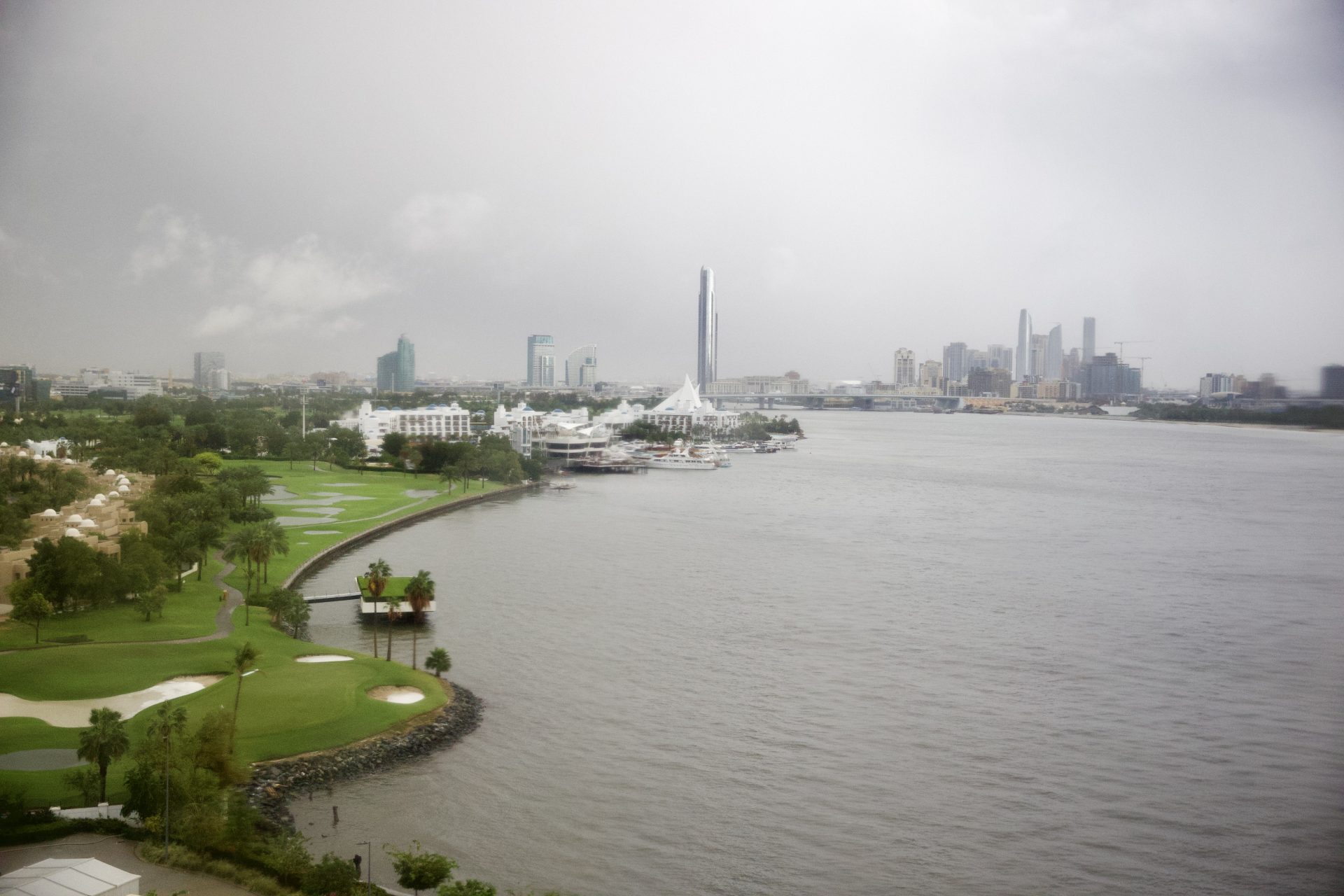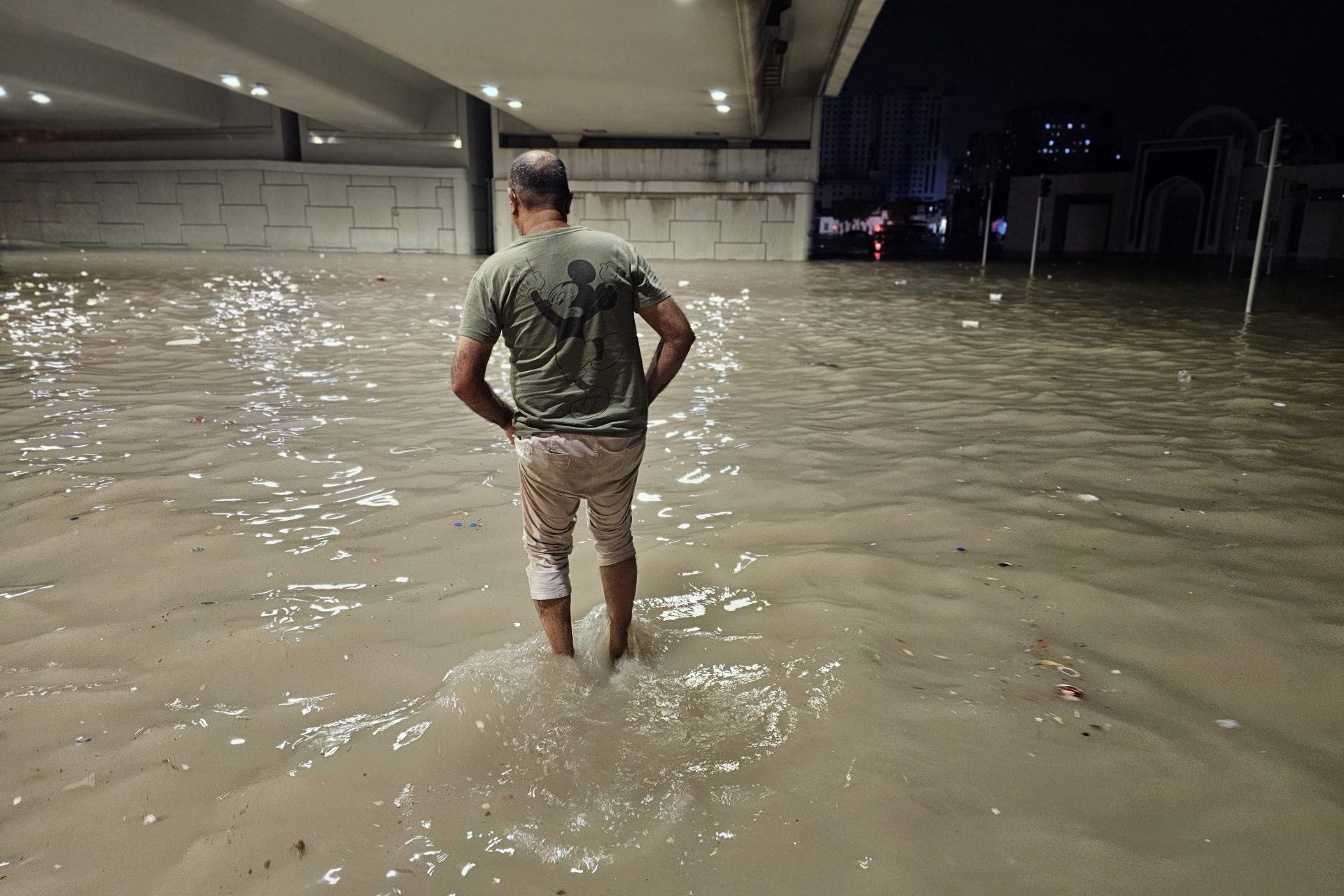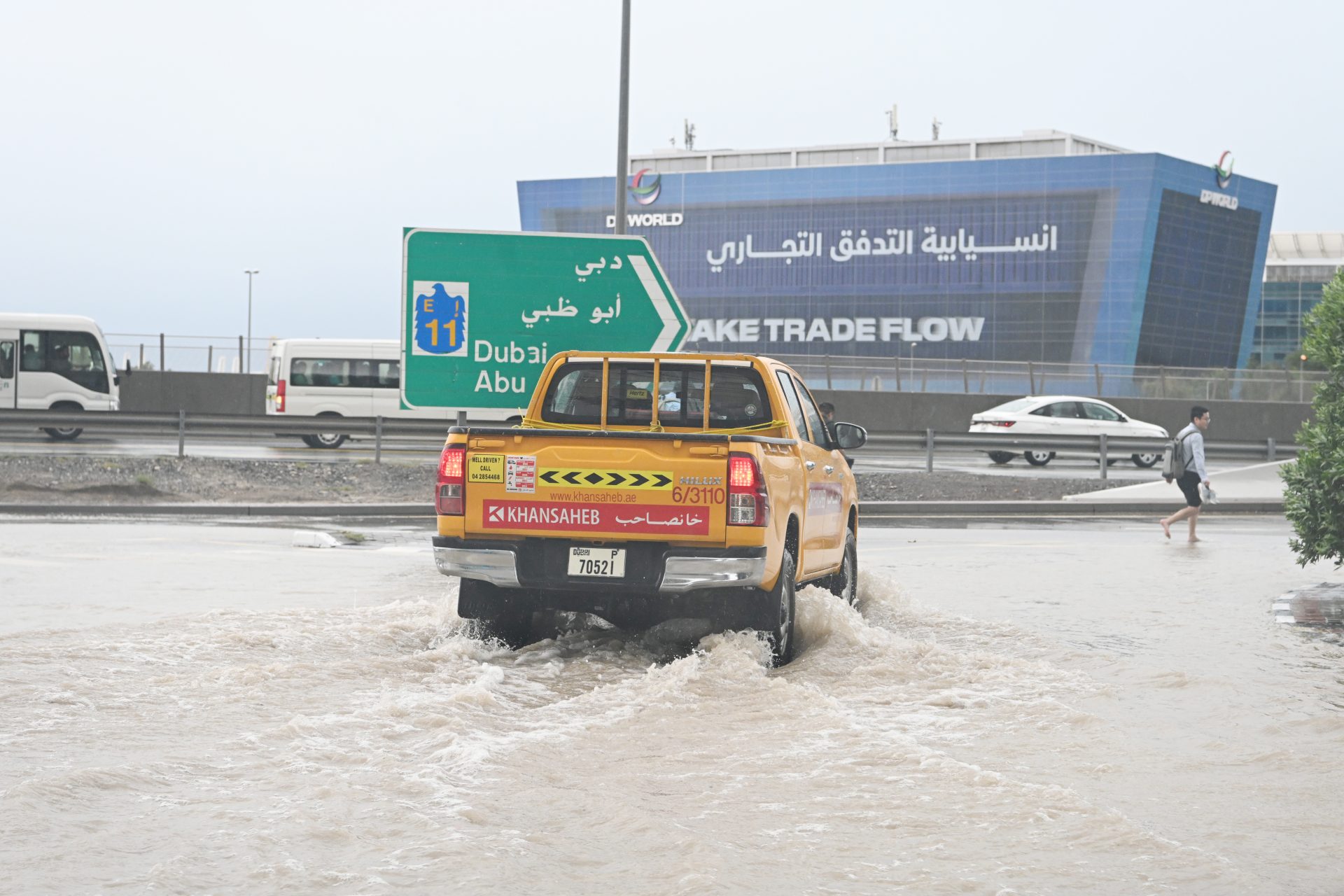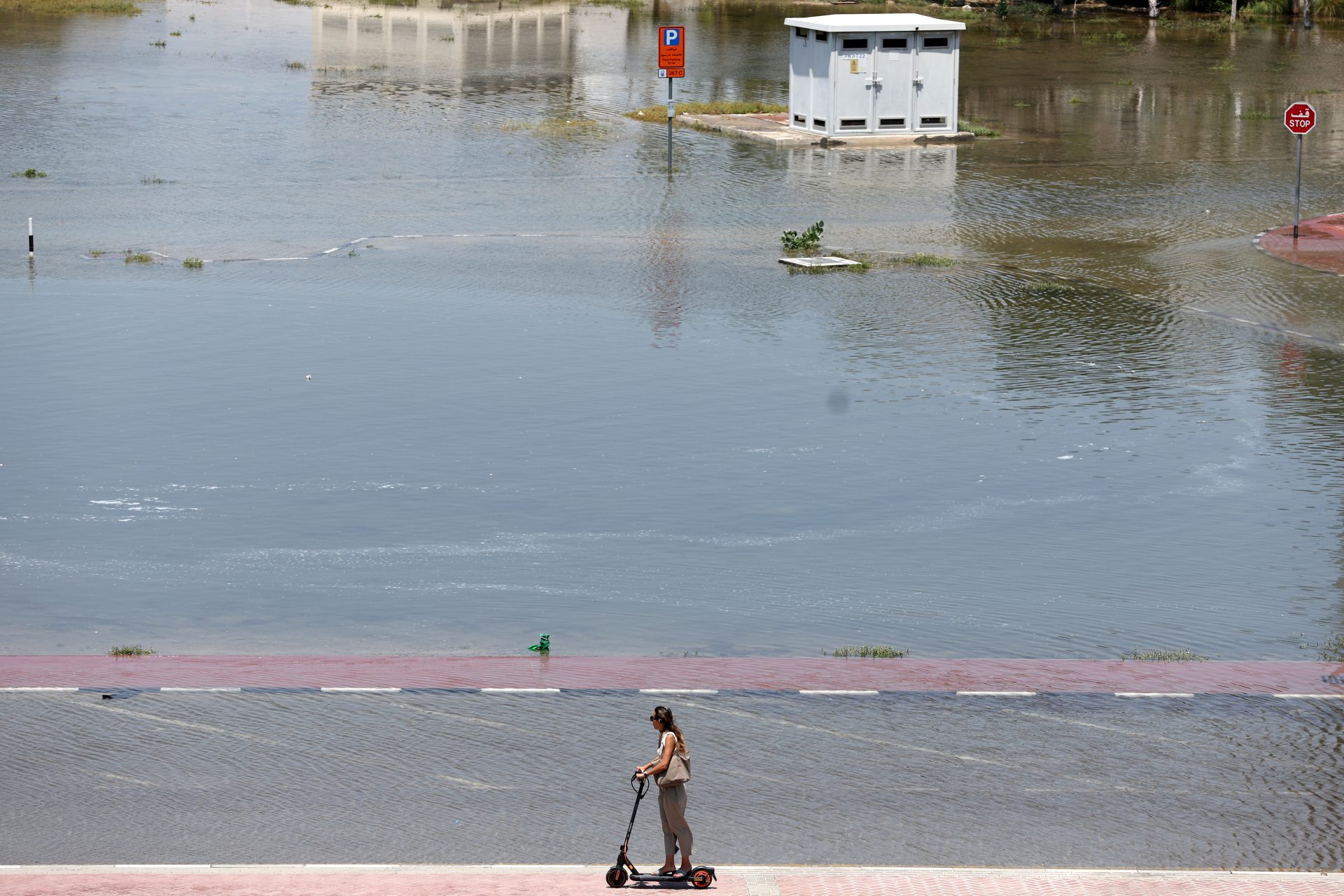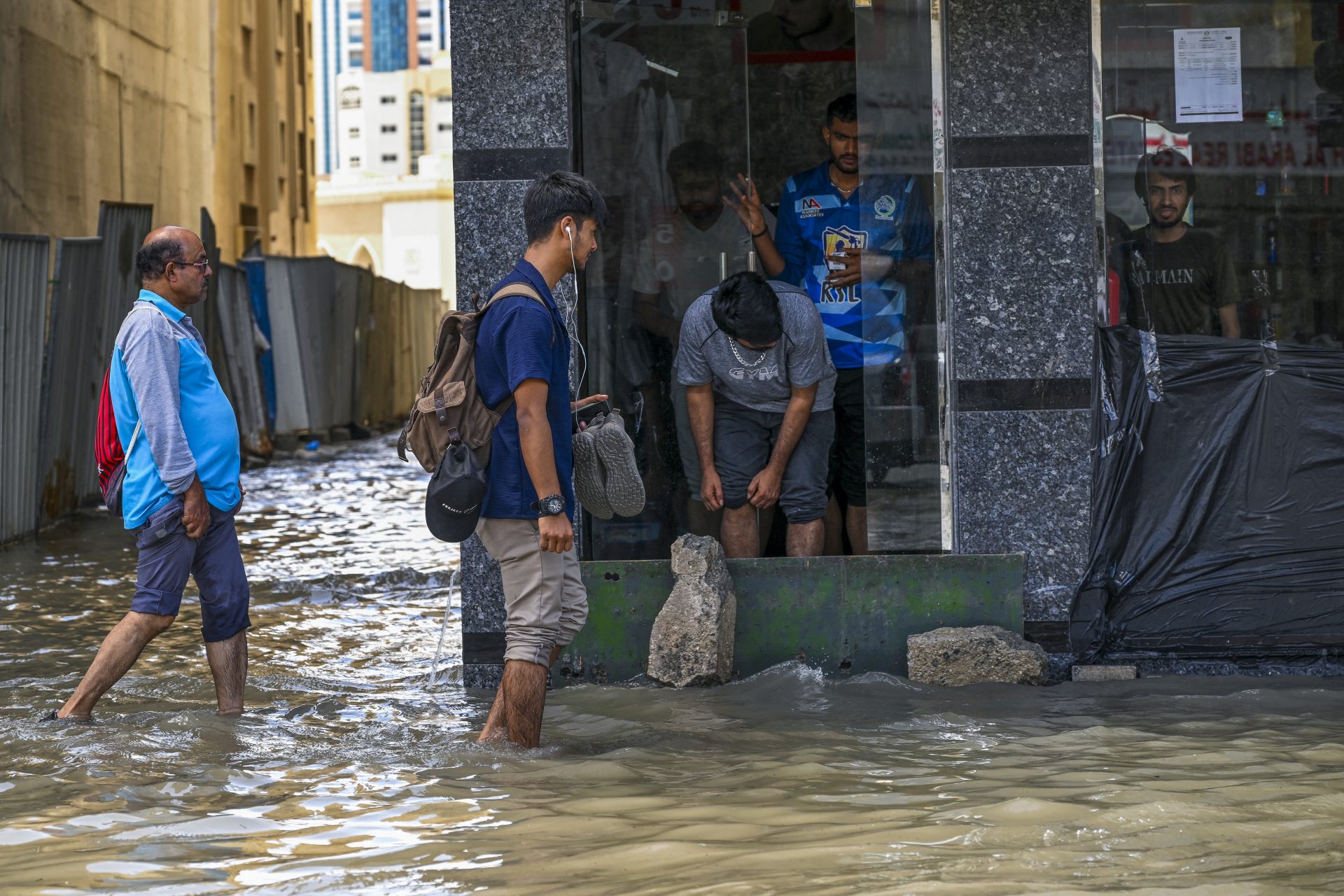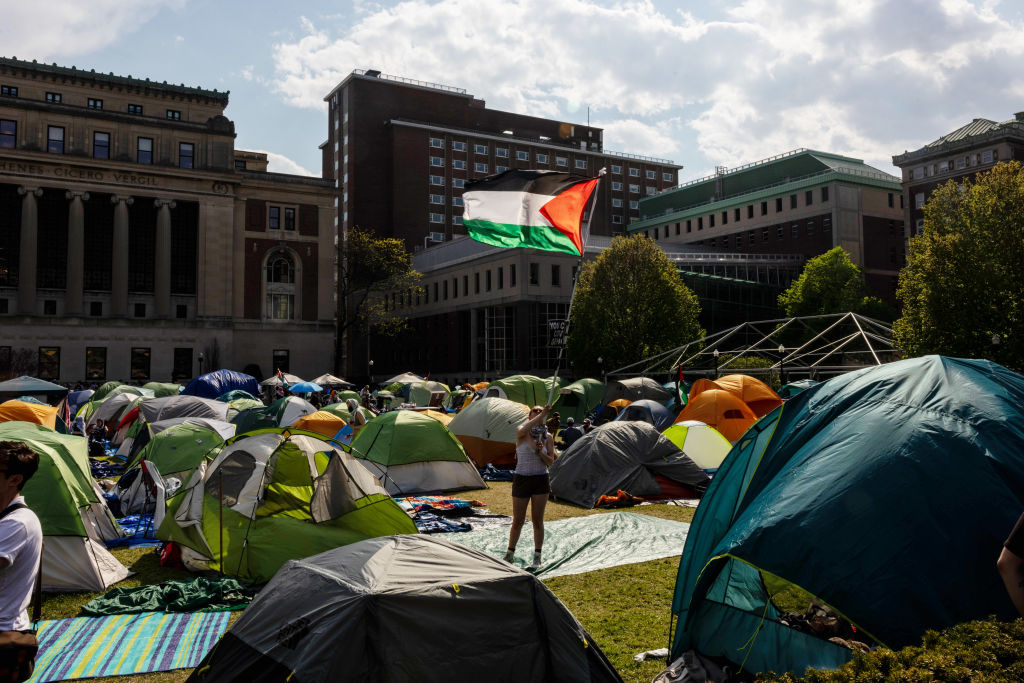In Pictures: Dubai flooded after historic rains
On April 16, the United Arab Emirates was hit by a record amount of torrential rains, which left the desert city of Dubai flooded.
According to the BBC, as much as 259.5mm or 10.2 inches of rain fell on the normally dry country, the biggest rainfall since records began 75 years ago.
WAM, a state-run news agency, said the precipitation the country experienced on April 16 was a "historic weather event" and that more rain fell than "anything documented since the start of data collection in 1949."
According to CNN, 100 millimeters (nearly 4 inches) of rain fell in just 12 hours on Tuesday, per measurements taken at the Dubai airport, which is close to the same amount of rain that Dubai receives typically in an entire year.
The aftermath of this deluge was a city in disarray, with Dubai's roads submerged in water.
Dubai, a popular tourist destination, also saw its airports affected. The BBC reported that on April 17, 300 flights were cancelled, and hundreds more were delayed.
Local authorities told The Guardian that schools in Dubai will be closed until next week, as the clean-up operation following the torrential rains is massive, and it will take at least that much time to restore order to the city.
According to The Guardian, UAE president Sheikh Mohamed bin Nayan ordered "authorities to quickly work on studying the condition of infrastructure throughout the UAE and to limit the damage caused."
On April 16, many people in downtown Dubai became trapped on the roads as the water levels rose so quickly.
Some resorted to abandoning their vehicles, while others chose to sleep in their cars due to blocked roads.
Some speculated that the heavy rains were the result of cloud seeding, a practice supposed to help provoke rain in arid and semi-arid regions.
The UAE has been using cloud seeding since the 1990s, so this was not a ridiculous theory.
However, UAE newspaper The National reported that an official at the UAE's National Center of Meteorology said the practice of cloud seeding did not cause the rain. Instead, according to CNN, most experts are putting the heavy rains down to climate change.
Intense and extreme rainfall is becoming more common around the globe as our planet heats up due to climate change. CNN explains that warmer atmospheres can more easily soak up moisture, which is then released in the form of heavy rain.
The UAE wasn't the only country affected by the rain. As reported by the BBC, a large storm system crossed the Arabian Peninsula, crossing the Gulf of Oman. This resulted in abnormal rains in Oman and southeastern Iran as well.
According to the Oman state news agency, at least 18 people were killed in flash floods due to the torrential rain. In the UAE, so far, only one death has been reported due to the flooding.
More for you
Top Stories



